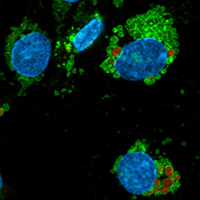Autofluorescence in freshly isolated adult human liver sinusoidal cells

Submitted: 5 October 2021
Accepted: 1 December 2021
Published: 13 December 2021
Accepted: 1 December 2021
Abstract Views: 948
PDF: 539
HTML: 37
HTML: 37
Publisher's note
All claims expressed in this article are solely those of the authors and do not necessarily represent those of their affiliated organizations, or those of the publisher, the editors and the reviewers. Any product that may be evaluated in this article or claim that may be made by its manufacturer is not guaranteed or endorsed by the publisher.
All claims expressed in this article are solely those of the authors and do not necessarily represent those of their affiliated organizations, or those of the publisher, the editors and the reviewers. Any product that may be evaluated in this article or claim that may be made by its manufacturer is not guaranteed or endorsed by the publisher.
Similar Articles
- Zhao Zhang, Hongming Fan, William Richardson, Bruce Z. Gao, Tong Ye, Management of autofluorescence in formaldehyde-fixed myocardium: choosing the right treatment , European Journal of Histochemistry: Vol. 67 No. 4 (2023)
You may also start an advanced similarity search for this article.

 https://doi.org/10.4081/ejh.2021.3337
https://doi.org/10.4081/ejh.2021.3337







